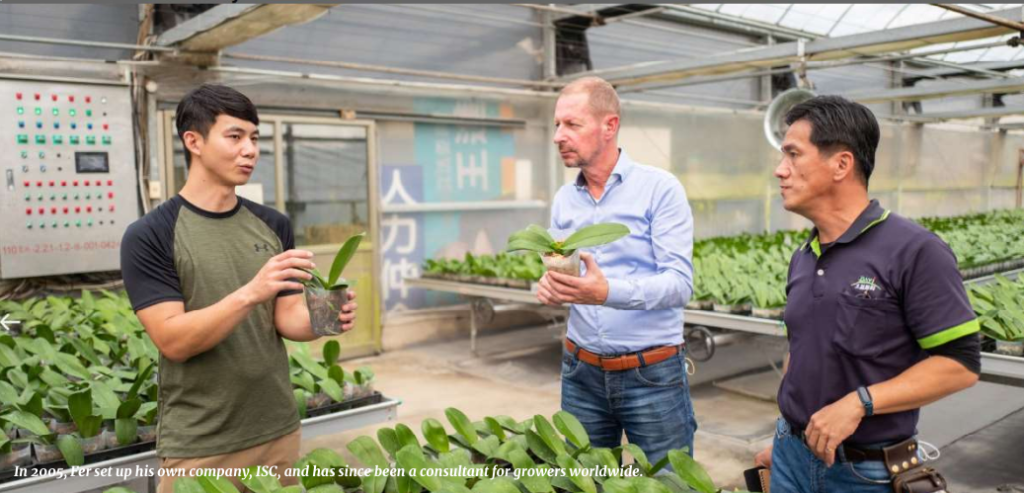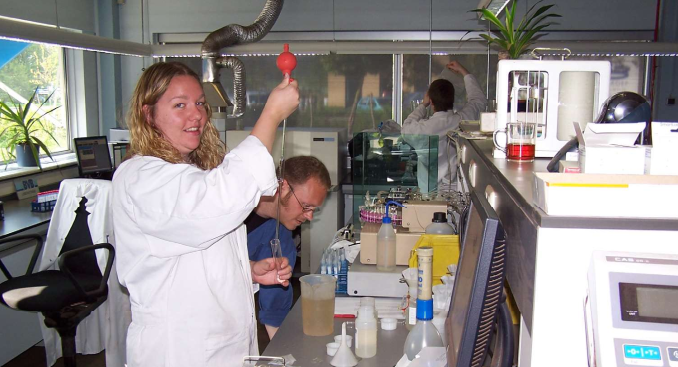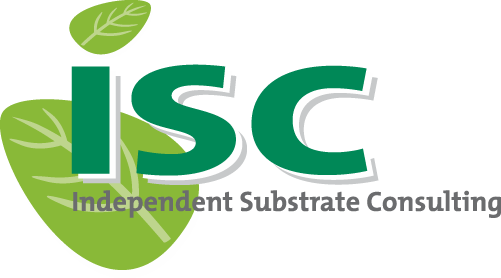Hopefully, people are not too stubborn to say…
… that peat is bad and everything else is good’

Growing media and substrates are hot topics in horticulture, and with more than 35 year sof experience in the sector, Fer Weerheijm has his finger on the pulse of the peat-free debate.
Starting in plant production, Fer Weerheijm was a sales manager of BVB (Bas van Buuren) Substrates in The Netherlands. Later, he managed a Swedish peat bog and purchased raw materials for manufacturing substrates.
It was in 1989, during his first visit to Sri Lanka, that Weerheijm saw waste fibre dust from coco fibre production. “There were big heaps from decades of growing, and it turned out its characteristics were quite special,” he says. With one initial container load imported to The Netherlands, the first growing trials began.
“Although it was fine, the air content was high and water absorption good. After drying, it was possible to compress and expand it again with water. We trailed it with cut roses and noticed it was durable; even after four years, the structure was acceptable.”
This piqued Fer’s interest in the possibilities of using alternative organic materials for commercial plant production. “This was a start, and we were one of the first,” says Weerheijm.
This couldn’t have come at a better time, as it coincided with increasing rumblings of public discontent about the destruction of peat bogs. Soon after, horticulture in the UK began its peat-reduction journey, but as Weerheijm says, counterparts in Europe looked on questioningly.
“Peat was as close to the ideal as we could get, and no one ever thought therewould be a connection between CO2 and peat. But now the awareness is increasing, which is a good thing, and our work is to find alternatives.
But we have to be realistic and don’t want to get to a point where the consumer cannot pay the price.”
Weerheijm can see awareness in Europe is growing, and the (retail) market is asking for peat-free plants, but worldwide countries such as Russia and China are still extracting and using a lot of peat. Although the EU has not set any deadlines for the industry to reduce peat use, growing media companies are setting targets. “But you have to be careful with milestones as you then have an obligation which you might not be able to meet — and this is a worry,” says Weerheijm. “If you are not a grower, it’s easy to say, ‘I want to buy your plants 100 per cent peat-free’, but it might be three times more expensive, so you need to look before you leap.”
LOOKING AT IT FROM ALL SIDES
For every different substrate, says Weerheijm, there is a positive and a negative. “We all want to be as sustainable as possible, but we must not forget that growing in the open field has disadvantages. You use ten times more water, drain a lot of fertiliser and minerals into the soils, and the incidence of disease and pests is much higher.”
Weerheijm compares this with a substrate which needs less water and fertiliser and the reward of a higher crop yield. “So, it looks like growing in a substrate is the best environmental option, but producing that substrate is never sustainable.”
He explains that energy costs are high to melt basalt rocks to make Rockwool, and the same is true for perlite, which must be heated to more than 9oo°C. Peat production destroys natural landscapes and releases CO2 in the air, coco fibre has to be washed and transported from afar, the quality of composted greenwaste is unreliable, and wood is less stable. Then, there’s biochar, which can be used as an additive, but research is needed. All of these should also have the consideration of long-term availability.
Weerheijm notes, “Then it’s time to be realistic, not get too attached to only one goal, but look at what is possible. You can grow in anything, even sheep’s wool. A plant needs fertiliser, water and air, but if you are growing 100,000 tomato plants, you must make it practical and feasible.”
He says all of these can be helpful as additives and part of the solution but not complete replacements for the tens of millions of cubic meters of substrate used annually in Europe alone.
There’s also the question of what to do with the substrate once it’s been used. Some materials, including coir and peat, can be steam sterilised and recycled, but it takes energy to make the steam.

As this inevitably changes the characteristics of the substrate, they can then be reused for soil improvement but not always as a substrate. Even used Rockwool can be melted down to make bricks, but again, at what cost?
TAKING STEPS
Research institutes, companies, and organisations like Regeling Handels Potgronden (RHP) in Holland, which acts as a knowledge centre for developing substrates and soil-improving materials, are sharing data. “I don’t know of any company that is not investing and doing trials,” says Weerheijm. “Research will continue step by step. We have to hope people are not too stubborn to say that peat is bad and everything else is good.”
To help the industry further, Growing Media Europe has devised a tool to analyse the environmental impact of individual materials. It considers things like carbon footprints and social impact, so it can help companies decide what products are worth testing. “When we were working on this in the 1990s, we were dreamers, but now we increasingly understand more,” says Weerheijm.
What’s important in the future however, is for substrate industry representatives to have a clear understanding of the commercial consequences of change and communicate this to Brussels in the EU and other governing bodies around the world. “They need a ‘helicopter view’, a good understanding of the market and the production of raw materials coupled with good research.
We want to deal with a world responsibly, and explaining the consequences of alternatives properly is important.”
People are looking at lots of different alternatives pressed by reality, but Fer knows that growers must continue to grow in the most practical way while on this journey. “We have to do something, but we have to be careful and can’t do it in one day.”
WEERHEIJMN’S FIVE TIPS FOR CONVERTING TO PEAT-FREE GROWING MEDIA
- Listen and try to understand your customers: what do they want to achieve, and what do they need itf or?
- Focus your production on the needs of your customers.
- Train your sales team to be empathetic with the customer and clearly explain the limitations in production to avoid disappointments on both sides.
- Investigate the different characteristics of raw materials, including costs and availability.
- Be curious about new possibilities instead of following the crowd. Every place on earth has its own conditions, difficulties, and possibilities.

